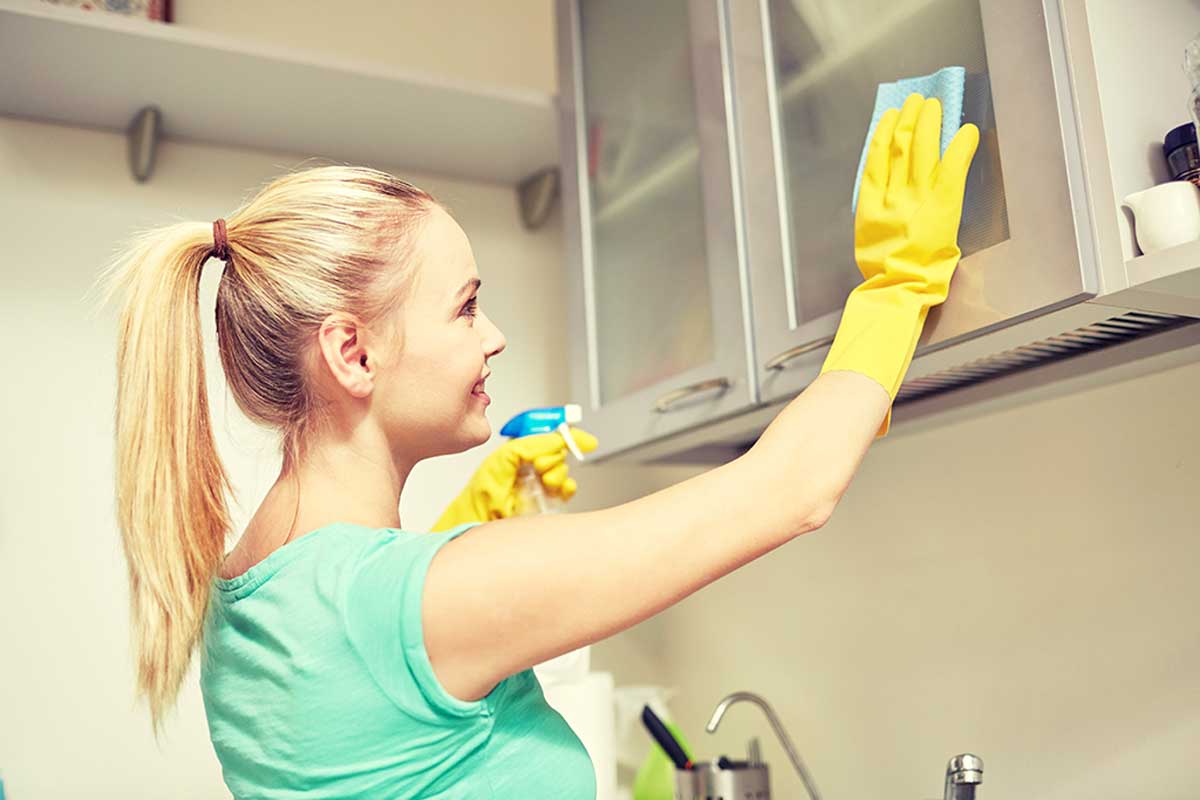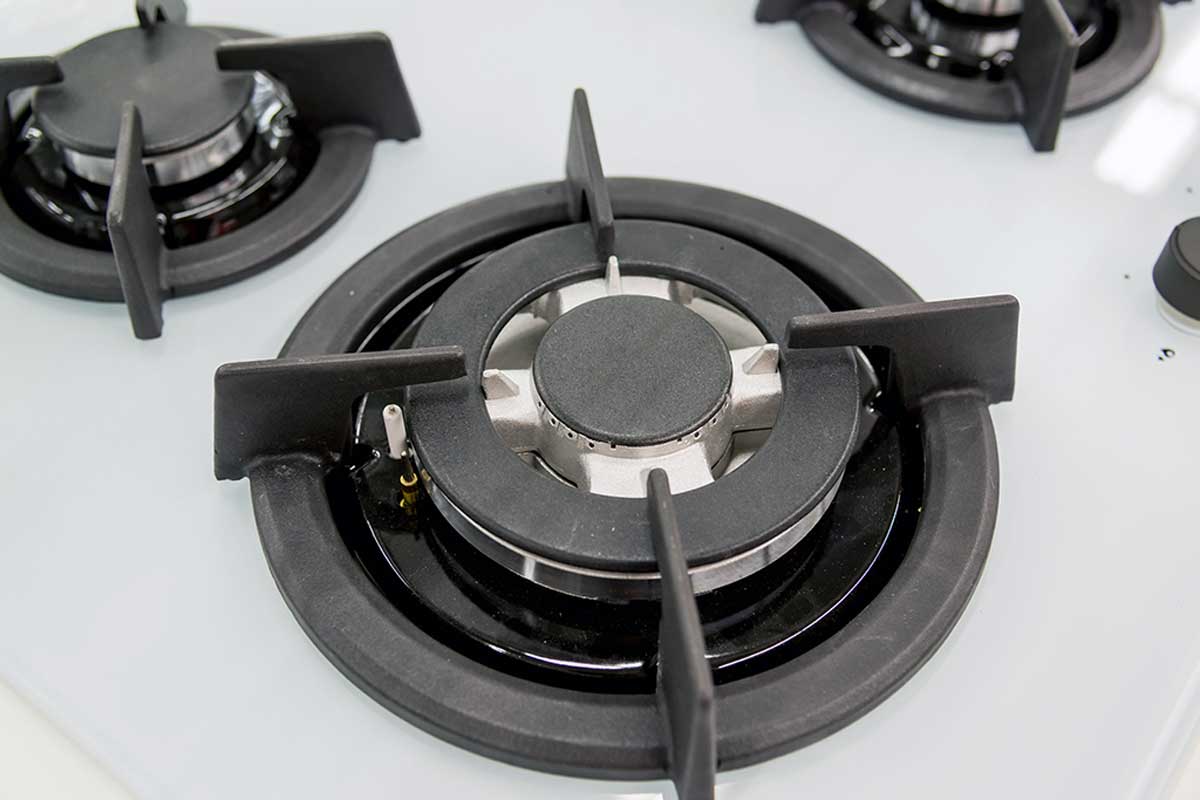How to Thoroughly Clean Your Kitchen

If you thoroughly clean your kitchen you can avoid the proliferation of invisible bacteria, fungi, and different microorganisms. Many of them even begin to adhere to the walls, cloths and sponges. Some can be so dangerous that, if they come into direct contact with food, they can cause diarrhea and an upset stomach.
Next, we’re going to tell you how to carry out a thorough clean that minimizes compromising your health and that of your family.
How to thoroughly clean your kitchen
Many people may think that cleaning a kitchen doesn’t have much science, and it’s true. However, after reading this article, you’ll realize that there are spaces and utensils that are often overlooked, where bacteria are accommodated without you even suspecting it.
An example of this is the sponge you use for washing your dishes. How often do you clean yours? So that you don’t forget to include this element in your cleaning routine, studies indicate that sponges harbor aerobic mesophilic bacteria and fecal coliforms, among others.
Read on to find out how to perform a deep clean in your kitchen.
Clean and disinfect your cabinets

Prepare basic hygiene items such as sponges, clean and dry cloths, disinfectant products, and brushes. Begin by cleaning the top of your kitchen cabinets, which should be polished inside and out. This way you can guarantee that there’s no accumulation of dust.
Make sure you clean shelf by shelf and put special emphasis on the corners. Clean wherever you think that bacteria and fungi will lodge. The most suitable elements for cleaning are cloths, a little soap, and water and nothing that’ll affect the material of the drawers.
Finally, make sure everything is dry to avoid moisture, which also attracts fungus.
Don’t forget the extractor hood
Continuing with the kitchen elements that are in the upper part of your kitchen, don’t forget the odor extractor or the extractor hood. These tend to accumulate a lot of dust and grease, especially on the top.
To clean, you must use a degreasing product, especially when it’s not been cleaned for a long time. In addition, you have to disassemble some parts such as the lid that covers it, as we explain in an article that we dedicated to cleaning the kitchen extractor hood.
Clean gas burners to thoroughly clean your kitchen

Have you tried a thousand different ways to make your gas burners or stove look like new without achieving a good result? We advise you to use bicarbonate and vinegar. Make a mixture with these two ingredients until you create a kind of paste. Then, spread it on the elements and let it act for about ten or fifteen minutes, depending on the amount of grease and residue that’s attached.
Use a soft but firm brush to scrub and remove the paste that’ll wash away the residue. You’ll notice how clean the burners are. Now, if the smell of vinegar seems strong and you dislike it, squeeze some lemons and polish with a dry cloth. This natural product will leave a delicious aroma and help to disinfect the area.
Check the gas outlet holes of the burners very well, because if they’re clogged you can have serious technical problems.
Sanitize the fridge
The refrigerator is one of the most important appliances in a kitchen. Not only does it keep your food and drinks cold, it keeps them fresher for longer. Therefore, it’s necessary to regularly clean and disinfect this appliance, since everything that comes out of there ends up on our table.
You should clean the fridge at least once a month. Ideally, do it every 15 days. Follow these steps:
- Unplug the fridge.
- Remove each item of food.
- Use a cloth moistened with vinegar and reach into every corner.
- Once clean, you can return everything to its place.
Finish with the walls, tiles, and floor

To finish cleaning the kitchen thoroughly, it’s necessary to sweep the floor and polish the walls and tiles. These areas also become dirty with dust, grease, and bacteria. There are some cleaning chemicals in there, but it’s better to go organic or natural.
First, apply the product you’ve chosen on the areas to be cleaned, leave it to act for a few minutes and then scrub with a brush or special sponge for this type of surface. Pass a clean cloth over the area to remove the residue and remember to wash it with each pass.
Finally, use a new cloth to rub in a little vinegar, which will finish dissolving the grease and disinfecting. Try to wash these areas once or twice a month to prevent that mixture of dirt from soaking in and becoming even more difficult to remove.
That’s how easy it is to thoroughly clean a kitchen
As you can see, thoroughly cleaning your kitchen is very easy and straightforward. You just have to take the time to clean each drawer, shelf and appliance. You can use specialized products or do it with the help of soap, water and natural products such as vinegar, lemon and bicarbonate.
All cited sources were thoroughly reviewed by our team to ensure their quality, reliability, currency, and validity. The bibliography of this article was considered reliable and of academic or scientific accuracy.
- Zárate, N., Cowan, C., Román, C., & Lombardo, G. (2020). Contaminación bacteriana de esponja de lavado y bachas de cocina de cantinas de escuelas de asunción y gran asunción. Pediatría (Asunción), 47(2), 94-99.